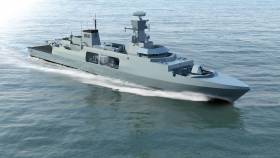Displaying items by tag: RN Type 31e frigate
Concerns Grow for Harland & Wolff Shipyard Belfast
Harland and Wolff shipyard in Belfast reports BBC News, can only survive until the end of the month without a deal, Unite the Union has said.
The business has been up for sale amid serious financial problems at its Norwegian parent company.
Trade unions have been hoping that the yard could benefit from plans to build more Royal Navy ships in the UK.
But now fear there is a risk that it will not survive for long enough to participate in that.
Susan Fitzgerald, the regional coordinating officer with the Unite trade union told BBC News NI's Evening Extra programme that if the yard the government needs to step in.
The yard employs around 130 people and specialises in wind energy and marine engineering projects.
It is also part of two consortia which are bidding for work on the Navy's new Type 31e frigate.
For more click this link.
#Shipyards - Merseyside based shipbuilder Cammell Laird in Birkenhead, has announced it has built a network of more than 2,000 suppliers as it steps up its bid to build a cutting-edge warship as Afloat previously covered.
The UK west coast shipbuilder, repairer and engineering services company says it is registering more than five new suppliers every week as it builds its Leander Frigate supply chain.
The business is bidding to build five Type 31e frigates for the Royal Navy after the Ministry of Defence took its first steps to reopening competition for the shipbuilding contracts.
The Leander, Cammell Laird’s offering designed by BAE Systems, will also be marketed by BAE Systems to international customers.
More than 400 Leander specific suppliers have registered with the programme since the competition was announced in September 2017 as part of the UK’s new National Shipbuilding Strategy. More than 300 have already been cleared to support the company’s UK MOD bids.
Two supplier conferences, held in February and March this year, saw growing support for Cammell Laird’s proposal, with the business continuing to engage with potential suppliers since.
Tony Graham, Cammell Laird Leander project director, said there were still opportunities for interested parties to join the T31e supplier list.
He said: “While our supplier list is already extensive as we select suppliers for the five Royal Navy frigates, BAE Systems has also had strong interest from other countries, so we are keen to hear from more companies that believe they could be part of the Leander success story.”
Businesses interested in joining the Leander supply chain should fill in a registration form on the Leander website by clicking here.































































